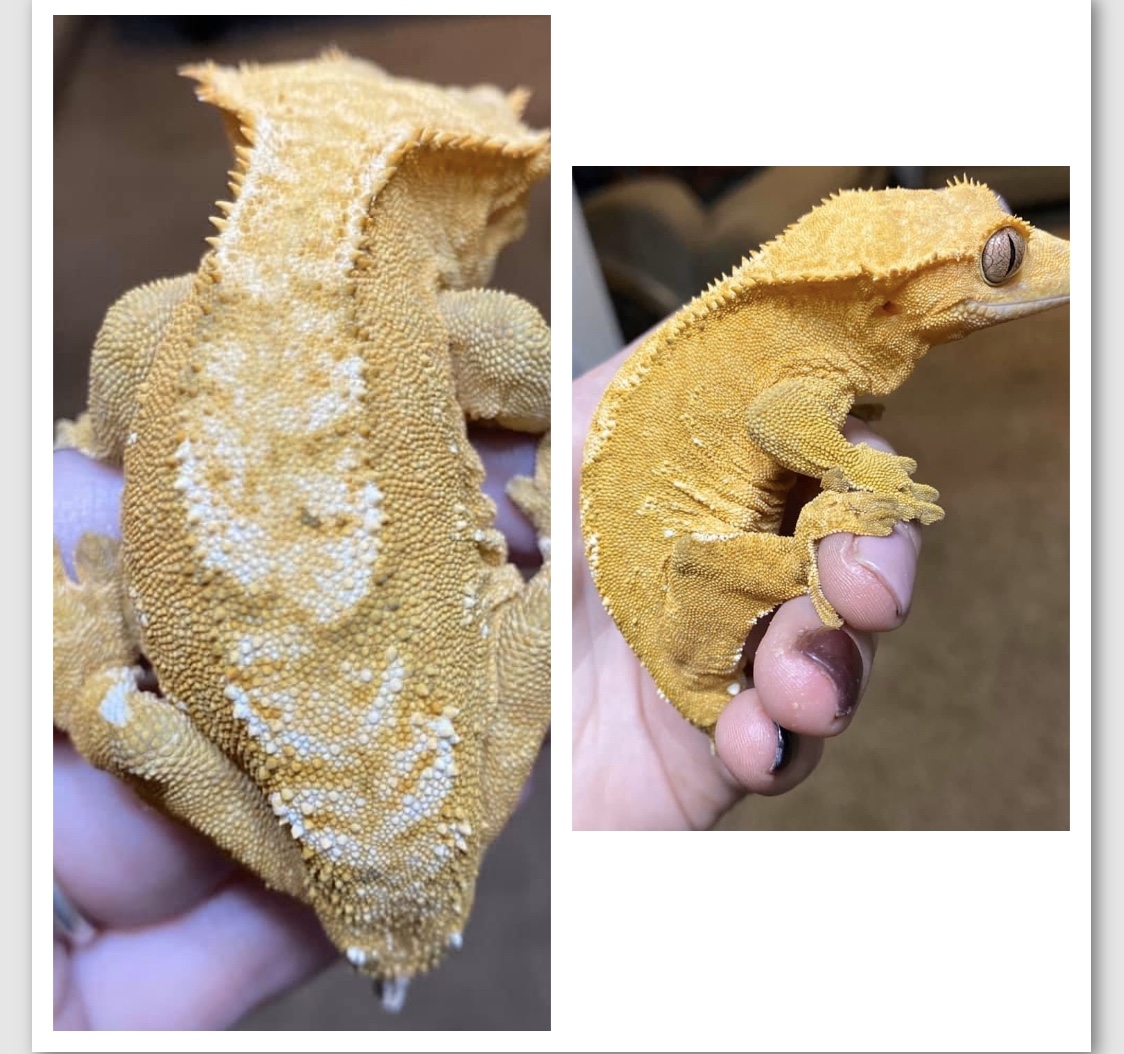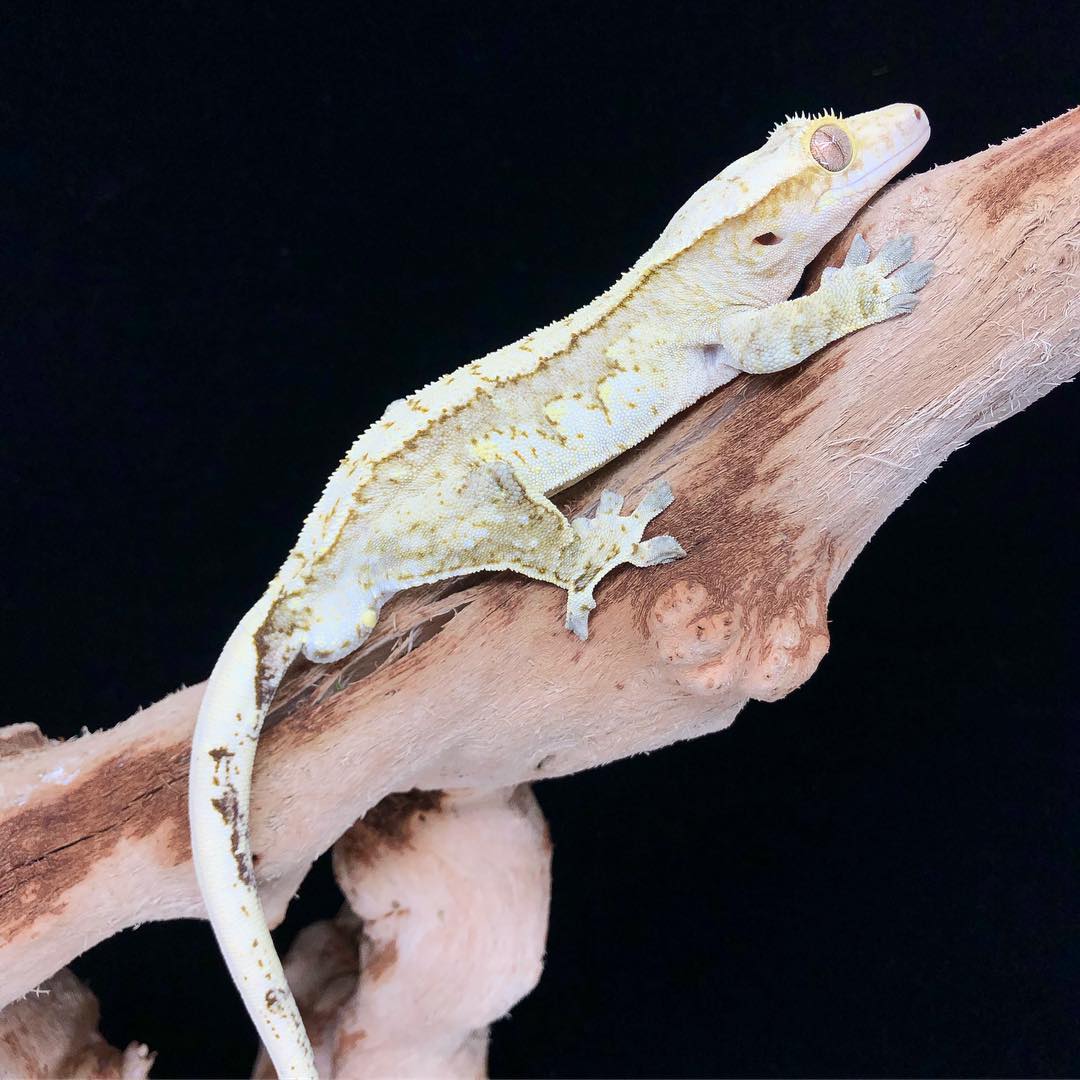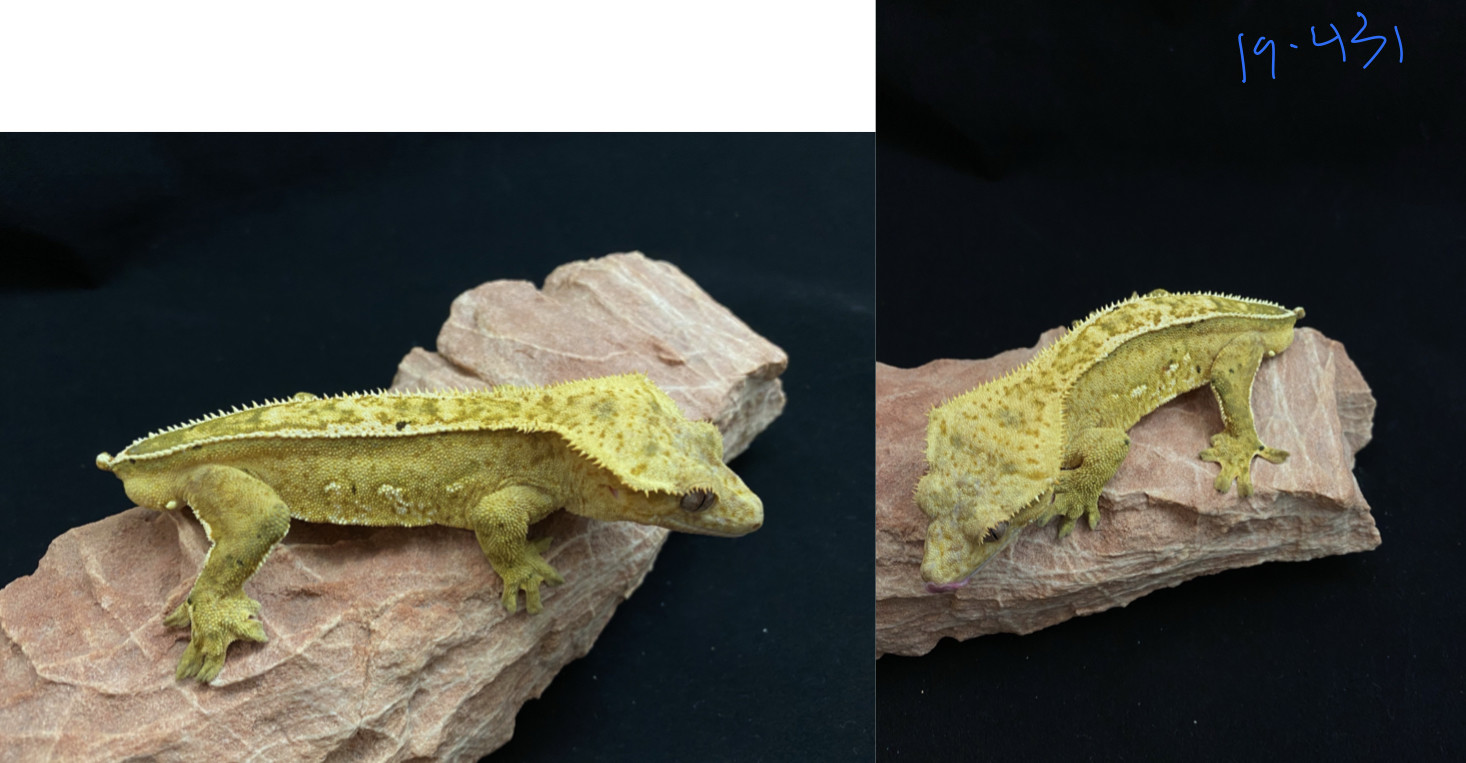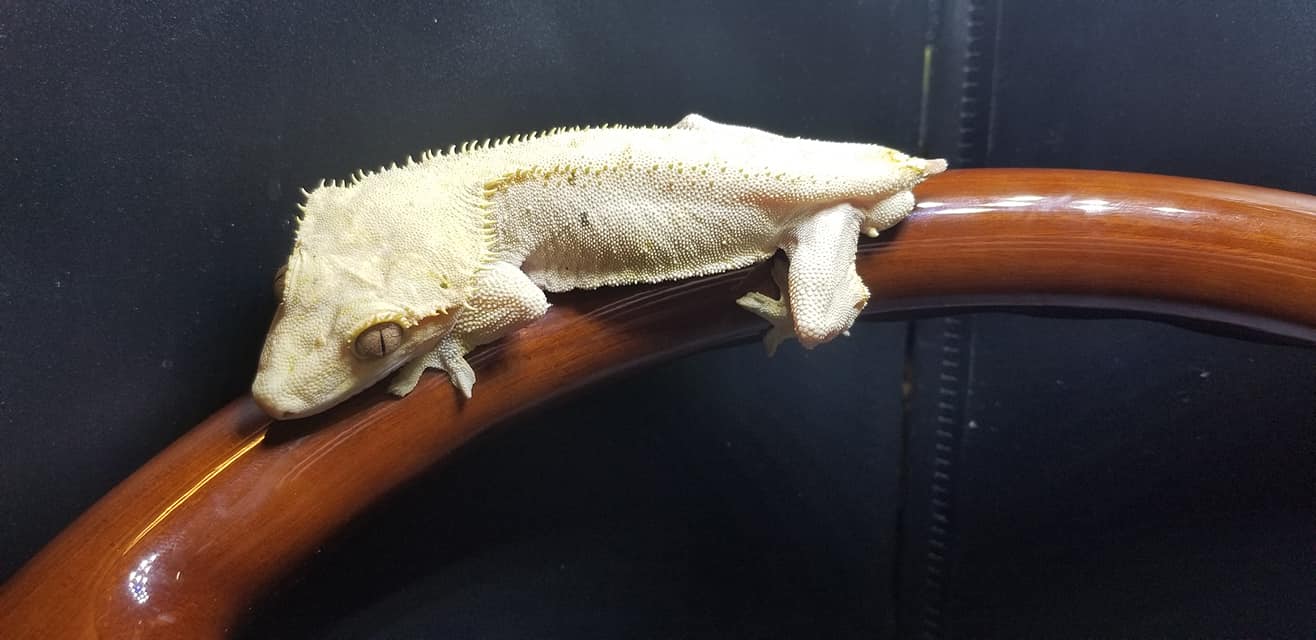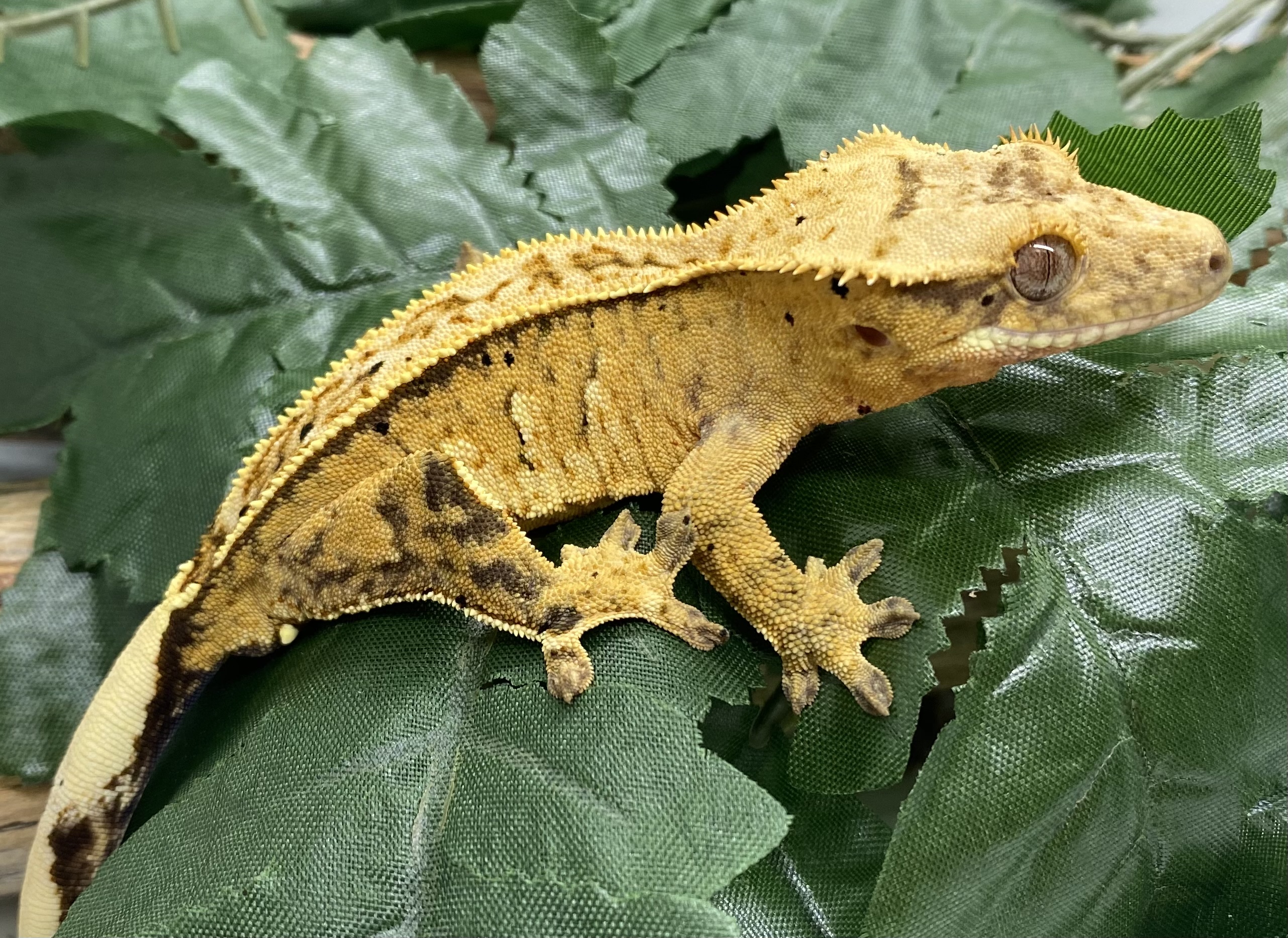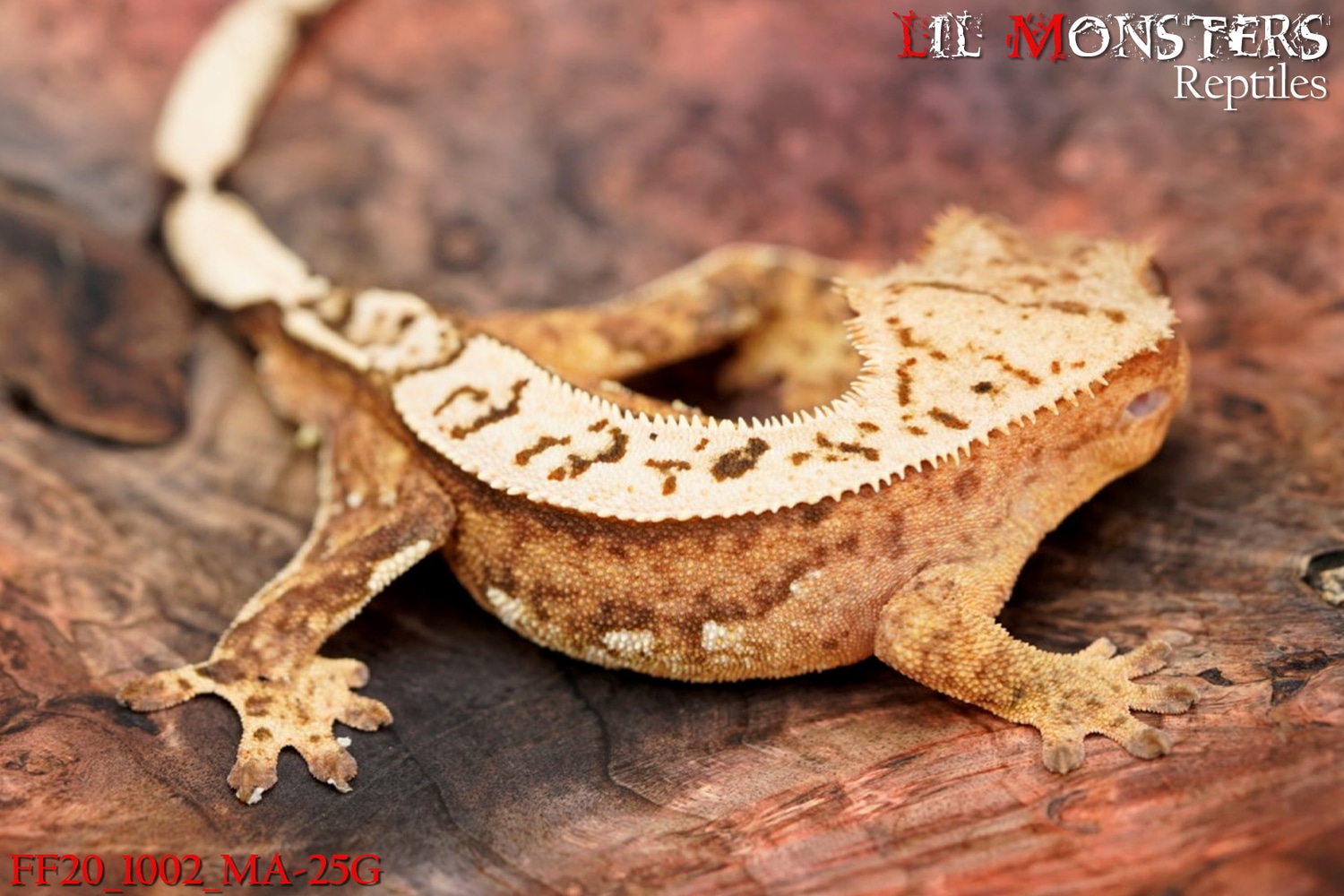Yellow Base
Type: Dominant
Aliases: Genotype YB
Issues: N/A
First Produced In: Unknown
Availability: Average
Last Updated: 2023-04-23
Do you have any suggestions or corrections for this article?
Click here to contribute feedback
About
Yellow base is dominant which means you need a yellow to make a yellow. This base color is naturally bright, has little dark pigment, and has clear indications that it may be a naturally occurring hypo gene distinct from the hypo triat. It is not unlike the first pastel Ball pythons found in Africa. However, in old age, many yellows can fade to an almost lavender or rust-colored tone. Much confusion has been caused by this trait due to how they fade in old age. This misleads some breeders into believing that lavender or reds can produce yellows, when in fact the animal is an old yellow that has faded. Since yellow animals naturally have reduced dark pigment we will occasionally refer to them as “naturally hypo”. Hypo however can still be added to these animals to create even lighter and more complex yellow phenotypes. Yellow based animals display white/cream patterns or WP (White Patterning). On a rare occasion, OP (Orange Patterning) may appear, but it fades to a white/cream in time. This OP is sometimes attributed to the animal having a red base, blended in, as these animals appear to display an orange color.[1]
History
At the onset of our hobby, some wild-type animals were described as buckskin, but there was a range of interpretations. Some were very dark, like what we call black and brown base, and some were a light tan or dirty yellow. These geckos, after reviewing some historical photos, appear to be displaying combinations of traits. The effects of them being naturally combined are beneficial, and/or not harmful for survival in the wild. From these variations, it is fairly easy to see how black base, yellow base, phantom, and hypo forms began to emerge more with selective breeding causing them to separate into distinct phenotypes. [2]
Appearance
Body
Yellow base is an important base color for many morphs so it must be noted how to properly identify them as they can look similar to high coverage harlequins. harlequin animals will lack coloration or be dark on the cusp of the front legs and around the chin. Yellow base animals will be yellow or white in those areas. Yellow base animals with strong tigering can break up the yellow base. This makes yellow base the only base color to act as a secondary base color where black base or red base can show through around the knees, toes, and tiger breaks. It makes yellow base behave like an intermediary but still behaves more similarly to a base in many ways. We will explain these interactions in more detail under combos and advanced morphs.[3]
Controversy
The term polymorphic was used to describe these animals and is correct, however, it became interpreted wrong in the hobby. This single interpretation has slowed the advancement of genetic understanding, in our community, more than any other factor to date. Please refer to “Polymorphic” in part 1 of Foundation Genetics. [4]
Proven Lines
Citrus
The final consideration with yellow base animals is the citrus designation. This comes directly from ACR when producing bright rich yellow and yellow-orange animals and eventually crossing them to C2. To quote him, “Some specimens are so clean and devoid of dark pigment that they have a hypo melanistic look to them. I’ve often referred to it as the “C2 glow”(Caponetto). "Citrus is a much nicer name in my opinion for yellow base" - (AV) , but it should be noted that this term is sometimes used when referring to bright yellow animals that have a hypo appearance to them. Remember that it is not always trait accurate to use the word hypo, as there are several hypo forms now to describe a similar effect.[5]
Related Traits
Primary Base Colors:
Black Base, Red Base
Combos
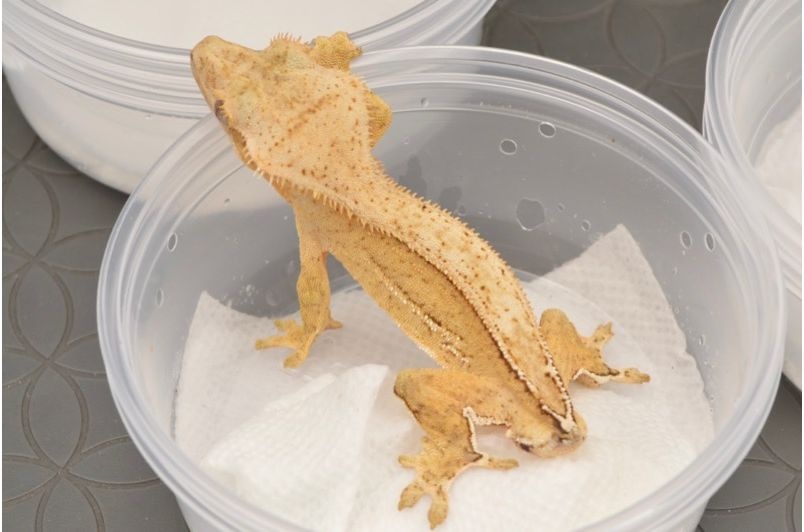
C2 Cream On Cream Phantom Quad Stripe - Whiteout Lateral Striping - CLEAN Creamy Yellowish Base Crested Gecko by Anthony Caponetto Reptiles
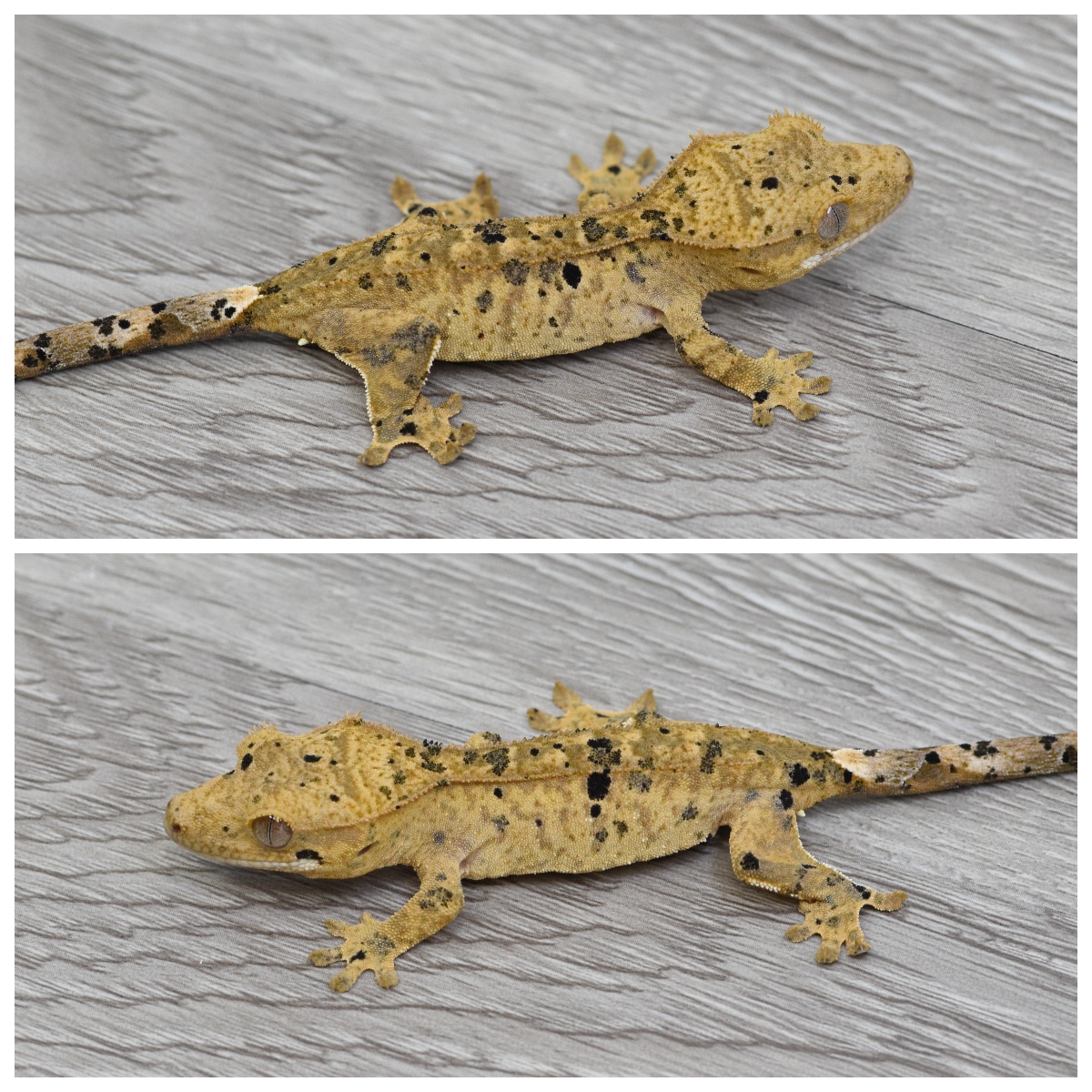
Ink Spot Oil Spot Red Spot Possible Super Dalmatian - Yellow Base Crested Gecko by Kryptiles
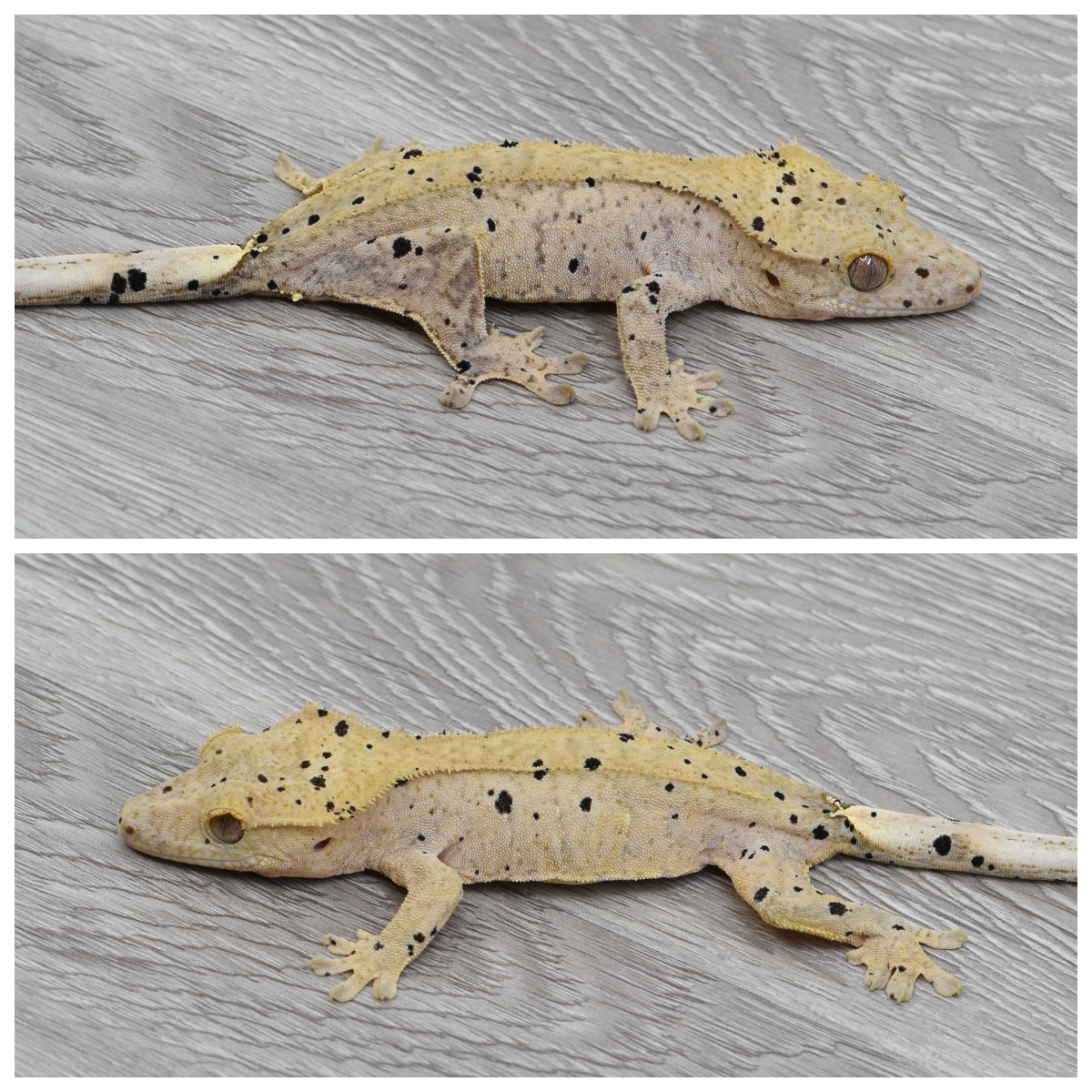
Yellow Base Dalmatian Crested Gecko by Kryptiles

Yellow Base Lw Crested Gecko by Kryptic Morphs LLC
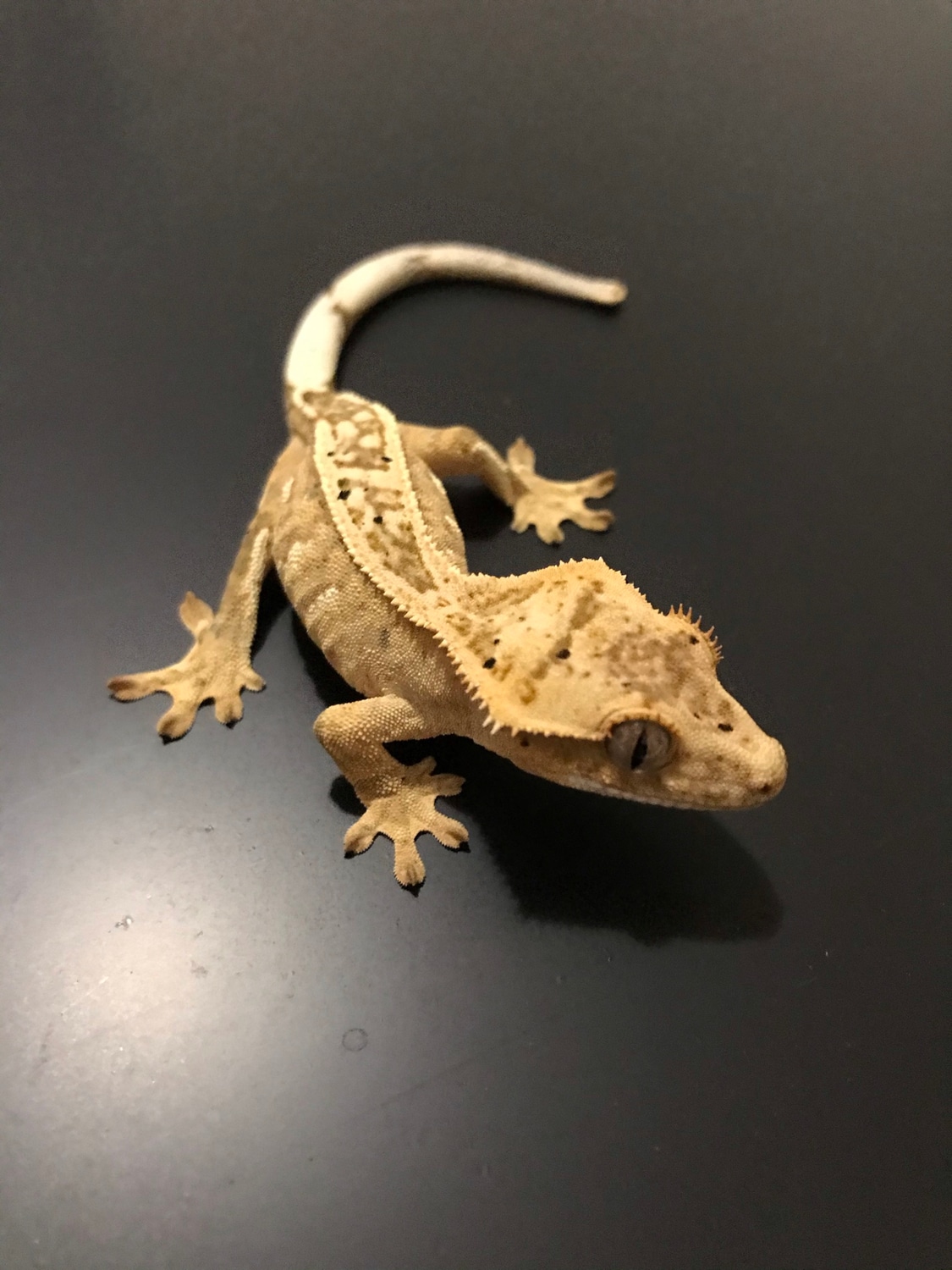
Yellow Base Phantom Partial Pinstripe Dalmation Crested Gecko by Reptilectrix Exotics

